Make Way for Pheasants: Assessing Habitat Potential on Marginal Acres
Jerry and Nancy Ackermann live in Lakefield, Minnesota, a small town of just over 1,600 people, where agriculture has been the backbone since 1879. The Ackermanns continue this tradition on their 1,200-acre farm, specializing in corn, soybeans and small grains.
In 2019, the Ackermanns, in partnership with Pheasants Forever, began restoring a 3.4-acre area into native prairie. “We wanted to provide a space for pheasants on our farm, and now we see them often while we’re out. There are also lots of deer and pollinators too.”
Turning Fields to Habitat: Determining Which Areas to Remove from Production
In August, Jerry Ackermann hosted a field day with Practical Farmers of Iowa and Pheasants Forever where he shared his experience using precision conservation on his farm to convert low-yielding acreage into habitat. At its core, precision conservation is analyzing data to pinpoint marginal acres where inputs exceed yields and cost the farmer money. These marginal acres can be transformed into essential habitat while increasing the farmer’s bottom line. Pheasants Forever offers precision conservation as a free service for farmers!
Jerry led attendees on an extensive overview of how precision conservation has benefitted his farm, starting with how the practice improves his soil quality. The day began with Mark Gutierrez of the Minnesota Soil Health Coalition demonstrating how soil structures stabilized by native prairie roots are less prone to erosion and nutrient loss. Since establishing his prairie, Jerry has noticed a measurable difference in erosion rates and an overall increase in soil health across the fields adjacent to the prairie.
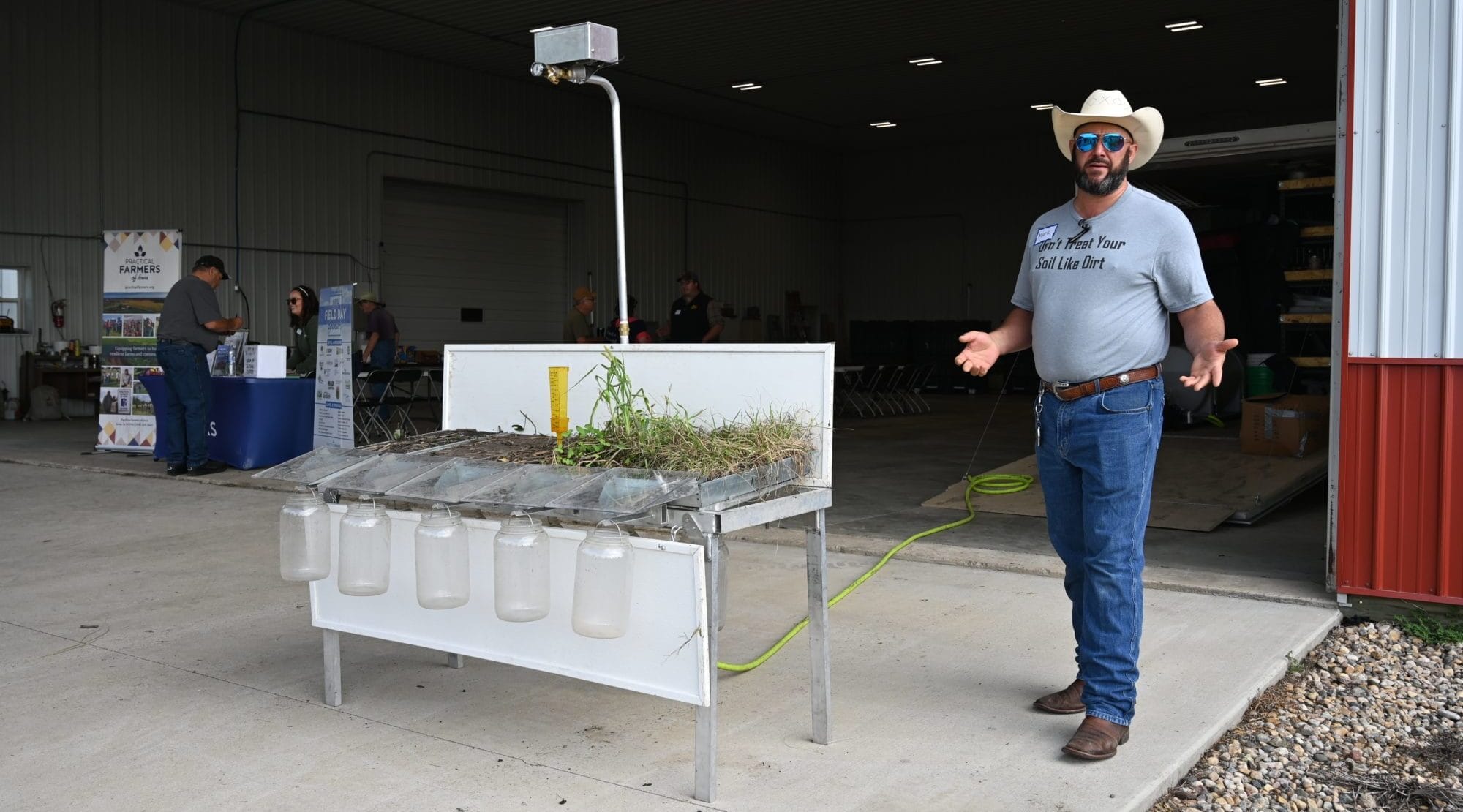
Mark Gutierrez, Executive Director of the Minnesota Soil Health Coalition. Mark kicked off the field day with a rainwater demonstration showing how native prairie plants can stabilize soil, slow or prevent erosion, increase drought resistance, and recycle nutrients in the soil.
From there, the field day caravaned down to the prairie where Micah Ranum, a precision agriculture and conservation specialist with Minnesota Pheasants Forever, highlighted the various steps needed to implement precision conservation on any farm.
“As a Precision Ag and Conservation specialist, we want to meet your business goals by increasing profitability, reducing unnecessary inputs, and improving your return on investment. In doing so, we can also achieve our goals of wildlife habitat, soil health, and clean water.”
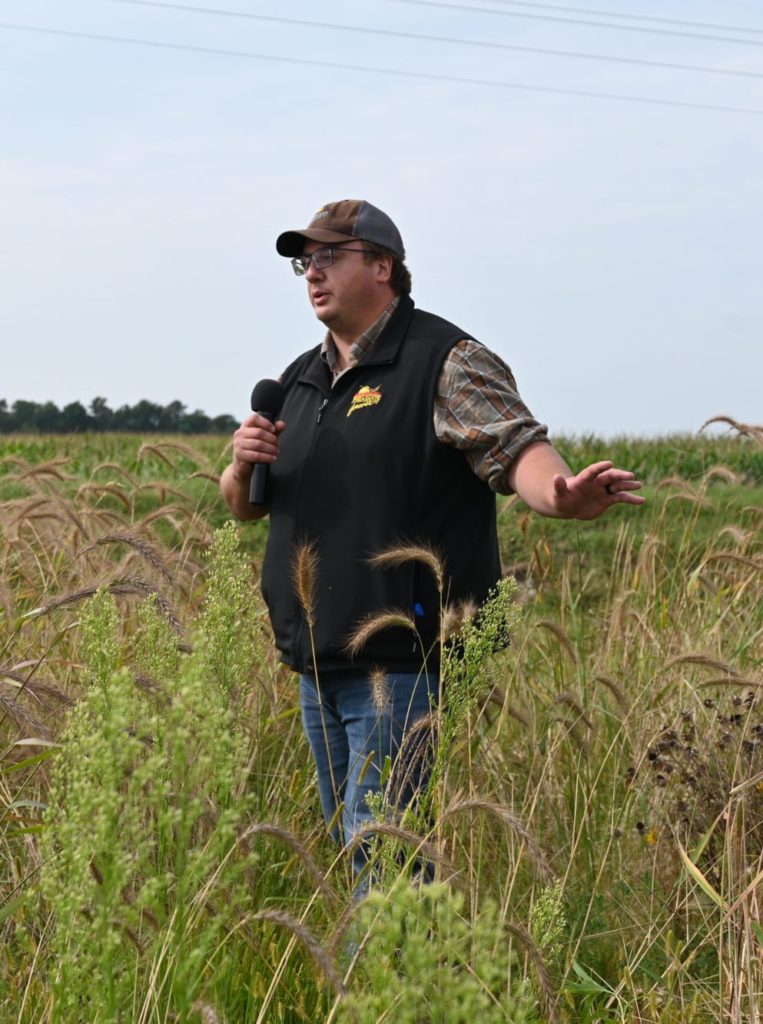
Micah Ranum of Pheasants Forever explains the physical and economic benefits of precision conservation at Jerry Ackermann’s field day in Lakefield, Minnesota.
The Ackermanns’ journey towards precision conservation began when they noted that lower-lying areas of their fields, despite being tiled, were prone to retaining water and subsequently produced lower yields year after year. Jerry reached out to a close friend, Scott Rall of Pheasants Forever, to conduct an on-farm assessment of the low-lying areas to determine which type of habitat would be suitable.
“Ultimately, while the area could retain water, it didn’t hold onto it long enough to be a wetland, so it was decided that prairie would be the best for the area,” Jerry explained during the field day.
Jerry used a mixture of native prairie plants when establishing his 3.4-acre prairie, including big bluestem, coneflower, purple prairie clover and meadow blazing star. Using a diverse mix of seeds in any habitat restoration project is vital for biodiversity on all levels, from soil-dwelling microbes to insects and birds to larger fauna such as deer.
“I’ve seen lots of pheasant nesting in the prairie, songbirds too. We have deer, rabbits, foxes and all kinds of insects. The prairie really does add beauty to the farm,” Jerry said.
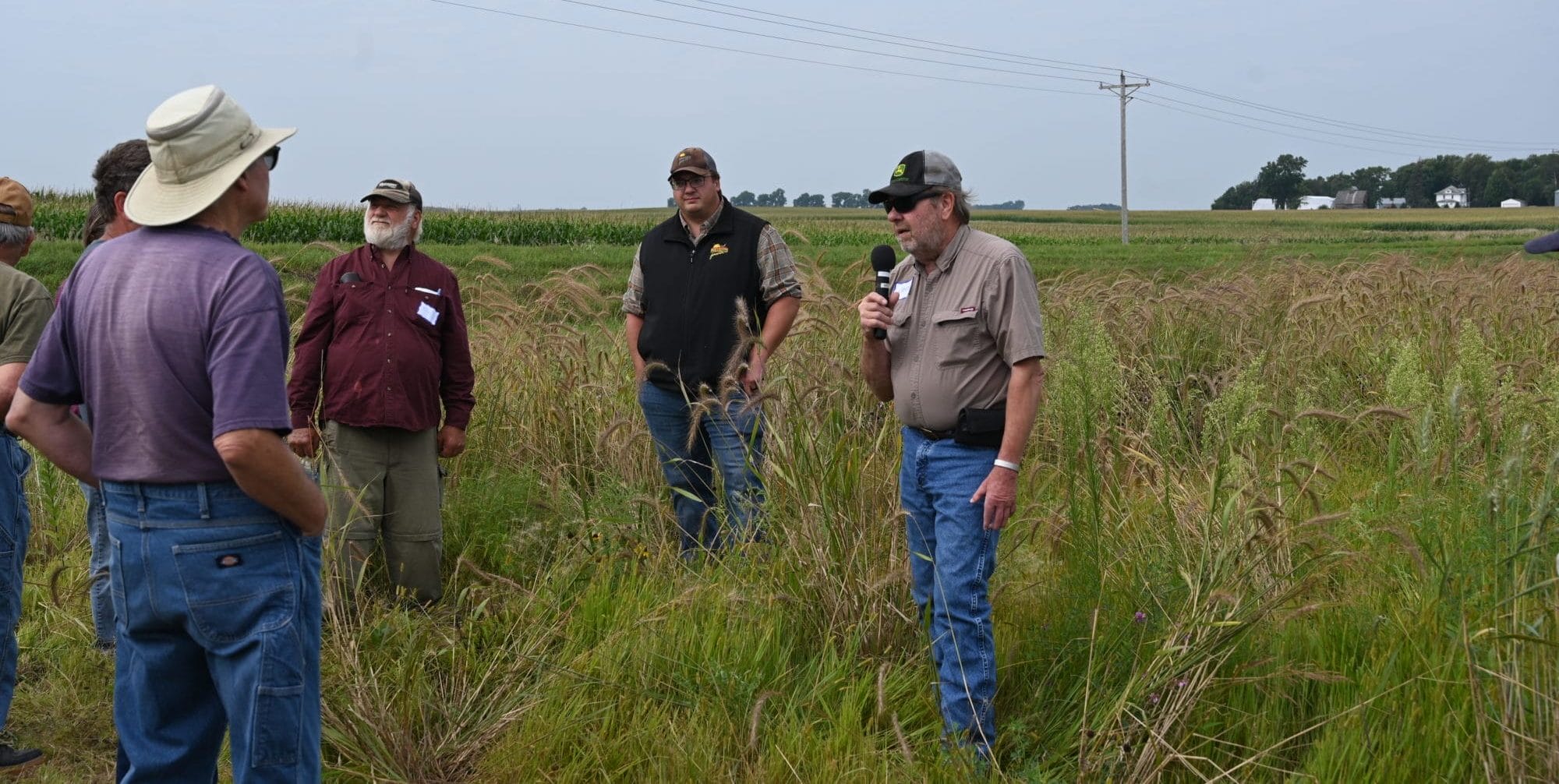
Jerry Ackermann illustrates how establishing biodiversity in habitat restoration is crucial to success. On this field day, the early season grasses and forbs were still blooming alongside summer flowering plants.
Precision Conservation Enhances Insect Biodiversity

Jerry Ackermann’s 3.4-acre prairie is home to a variety of beneficial insects, including native wasps, crickets and beetles.
At the conclusion of the field day, attendees headed back up to Jerry’s workshop, where they were treated to lunch and the results of an insect survey from Stephanie McLain, a state soil health specialist in Minnesota.
Stephanie had gone out into the fields surrounding the crops the morning before to collect insects, which she preserved in an alcohol solution for attendees to view. The insect survey revealed a variety of wasps, bees, crickets and others, highlighting the biodiversity already in place.
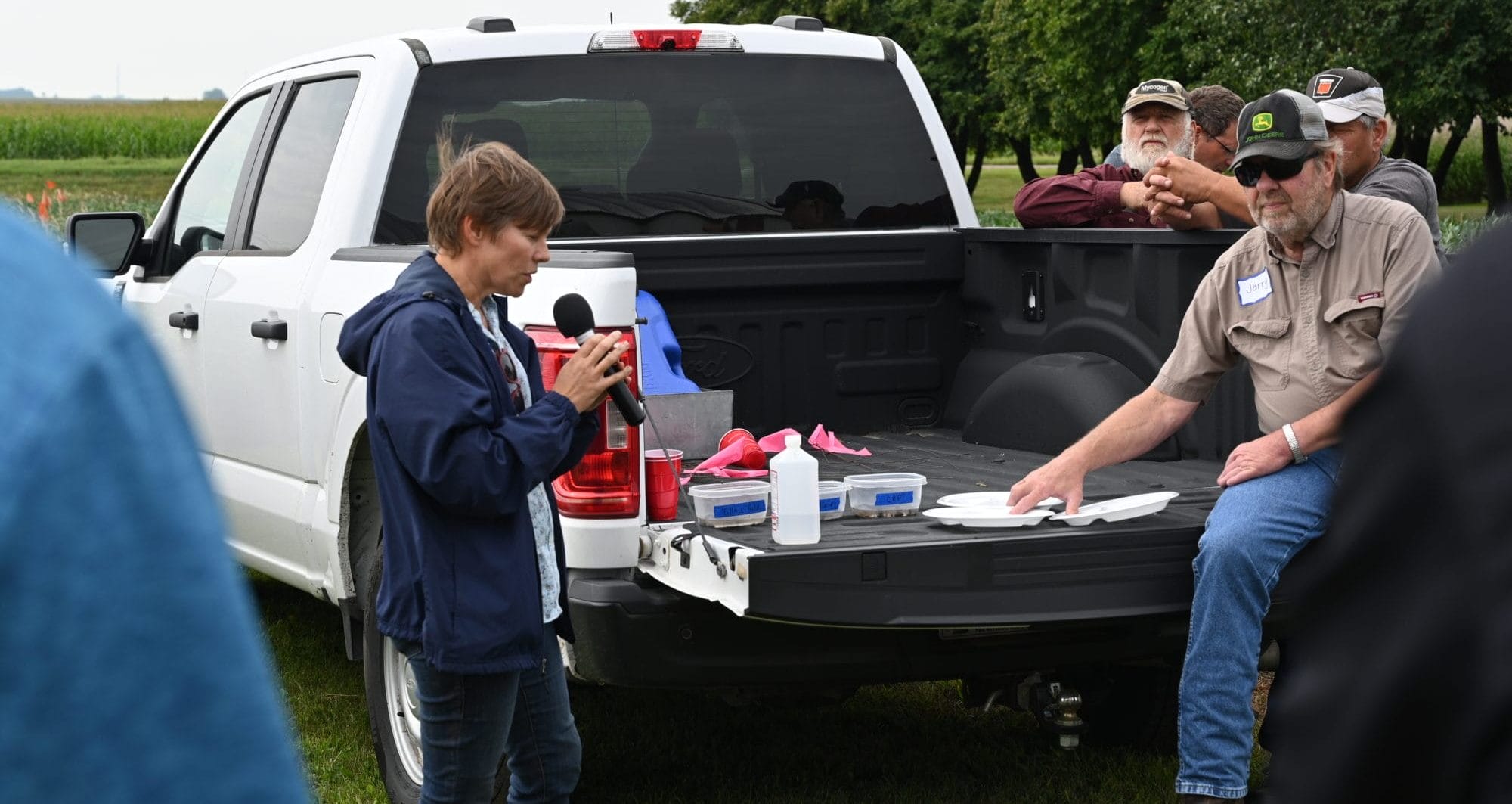
Stephanie McLain demonstrates how biodiversity within even a small ecosystem can have drastic impacts on insect health and populations while increasing soil health.
Precision conservation can enhance insect biodiversity in the same way that it does for plant biodiversity. The greater the mix of native plants, the greater the chances of a variety of insects finding the right type of plants needed for their individual feeding and nesting needs. Additionally, precision conservation minimizes the use of pesticide exposure within the restored areas, protecting critical insect species, including many pollinating species.
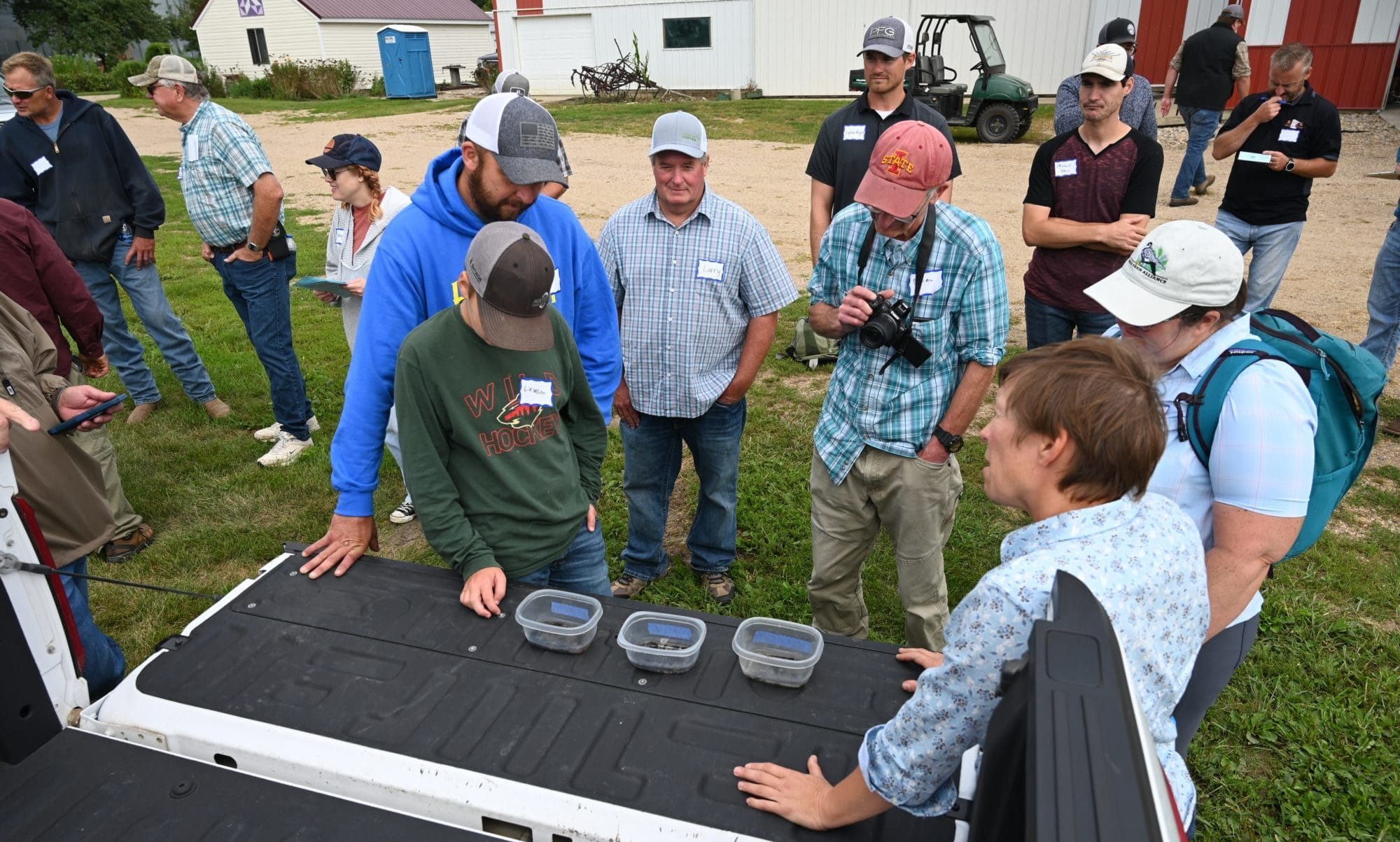
Attendees at Jerry Ackermann’s field day in Lakefield Minnesota observe the insects state soil health specialist of Minnesota, Stephanie McLain, gathered before the event began. A diverse mix of beneficial insects often indicates healthy soils and greater biodiversity in an area.
If you are interested in learning more about how precision conservation can benefit your farm, are curious about the process, or are ready to restore habitat on your land, get in touch with the precision conservation agriculture specialist in your area.
